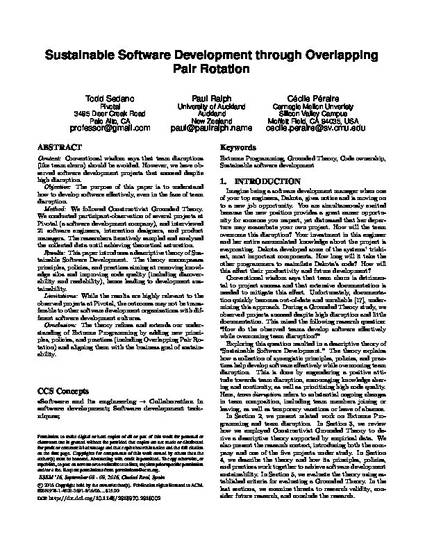
Article
Sustainable Software Development through Overlapping Pair Rotation
10th International Symposium on Empirical Software Engineering and Measurement (ESEM 2016)
(2016)
Abstract
Context: Conventional wisdom says that team disruptions (like team churn) should be avoided. However, we have observed software development projects that succeed despite high disruption.
Objective: The purpose of this paper is to understand how to develop software effectively, even in the face of team disruption.
Method: We followed Constructivist Grounded Theory. We conducted participant-observation of several projects at Pivotal (a software development company), and interviewed 21 software engineers, interaction designers, and product managers. The researchers iteratively sampled and analyzed the collected data until achieving theoretical saturation.
Results: This paper introduces a descriptive theory of Sustainable Software Development. The theory encompasses principles, policies, and practices aiming at removing knowledge silos and improving code quality (including discoverability and readability), hence leading to development sustainability.
Limitations: While the results are highly relevant to the observed projects at Pivotal, the outcomes may not be transferable to other software development organizations with different software development cultures.
Conclusion: The theory refines and extends our understanding of Extreme Programming by adding new principles, policies, and practices (including Overlapping Pair Rotation) and aligning them with the business goal of sustainability.
Disciplines
Publication Date
September, 2016
Citation Information
Todd Sedano, Paul Ralph and Cécile Péraire. "Sustainable Software Development through Overlapping Pair Rotation" 10th International Symposium on Empirical Software Engineering and Measurement (ESEM 2016) (2016) Available at: http://works.bepress.com/cecile_peraire/35/
